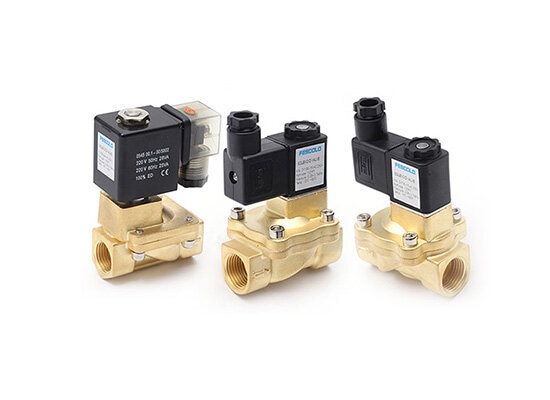
A solenoid valve is an electromechanical device that controls the flow of fluids or gases through a pipe or a tube. It is a type of valve that uses a solenoid to control the valve's opening and closing.
The solenoid is an electromagnetic coil that generates a magnetic field when an electric current is passed through it. The magnetic field generated by the solenoid is used to open or close the valve. There are different types of solenoid valves, including the pilot operated solenoid valve, which is the focus of this essay.
A pilot operated solenoid valve is a type of valve that uses a pilot valve to control the opening and closing of the main valve. The pilot valve is a smaller valve that is controlled by the solenoid.
When the solenoid is energized, it opens the pilot valve, which in turn opens the main valve. When the solenoid is de-energized, the pilot valve closes, and the main valve closes as well.
Design and Operation of a Pilot Operated Solenoid Valve
A pilot operated solenoid valve typically consists of a valve body, a main valve, a pilot valve, a solenoid, and a spring.
The valve body is the outer casing of the valve and contains the other components. The main valve is the larger valve that controls the flow of the fluid or gas. The pilot valve is the smaller valve that controls the opening and closing of the main valve.
The solenoid is the electromagnetic coil that controls the pilot valve, and the spring is used to keep the main valve closed when there is no pressure.
When the solenoid is energized, it creates a magnetic field that pulls the plunger of the pilot valve, opening it. This allows the fluid or gas to flow through the pilot valve, which in turn opens the main valve. The fluid or gas then flows through the main valve and out of the valve body.
hen the solenoid is de-energized, the magnetic field disappears, and the spring pushes the plunger of the pilot valve back to its original position, closing the pilot valve. This causes the main valve to close as well, stopping the flow of fluid or gas.

Application
Pilot operated solenoid valves are widely used in various industries, including manufacturing, chemical processing, water treatment, and HVAC systems.
They are used to control the flow of liquids and gases in a variety of applications, including pressure control, flow control, and temperature control. They are also used in safety systems, where they are used to shut off the flow of fluids or gases in case of an emergency.
Advantages and Disadvantages
One of the main advantages of pilot operated solenoid valves is that they can control high flow rates with low power consumption. They are also fast-acting, which makes them ideal for applications that require quick response times.
Another advantage is that they can be used with a wide range of fluids and gases, including corrosive and abrasive media.
However, pilot operated solenoid valves also have some disadvantages. They can be more complex than other types of solenoid valves, which can make them more expensive and more difficult to maintain. They can also be more prone to leakage, which can cause problems in certain applications.
Pilot operated solenoid valves are an important type of valve that are widely used in various industries. They are designed to control the flow of liquids and gases in a variety of applications, including pressure control, flow control, and temperature control. They are fast-acting and can be used with a wide range of fluids and gases.
For more information, please feel free to Contact with us.
FOKCA ©1998-2025 Fescolo Pneumatic All Rights Reserved Sitemap